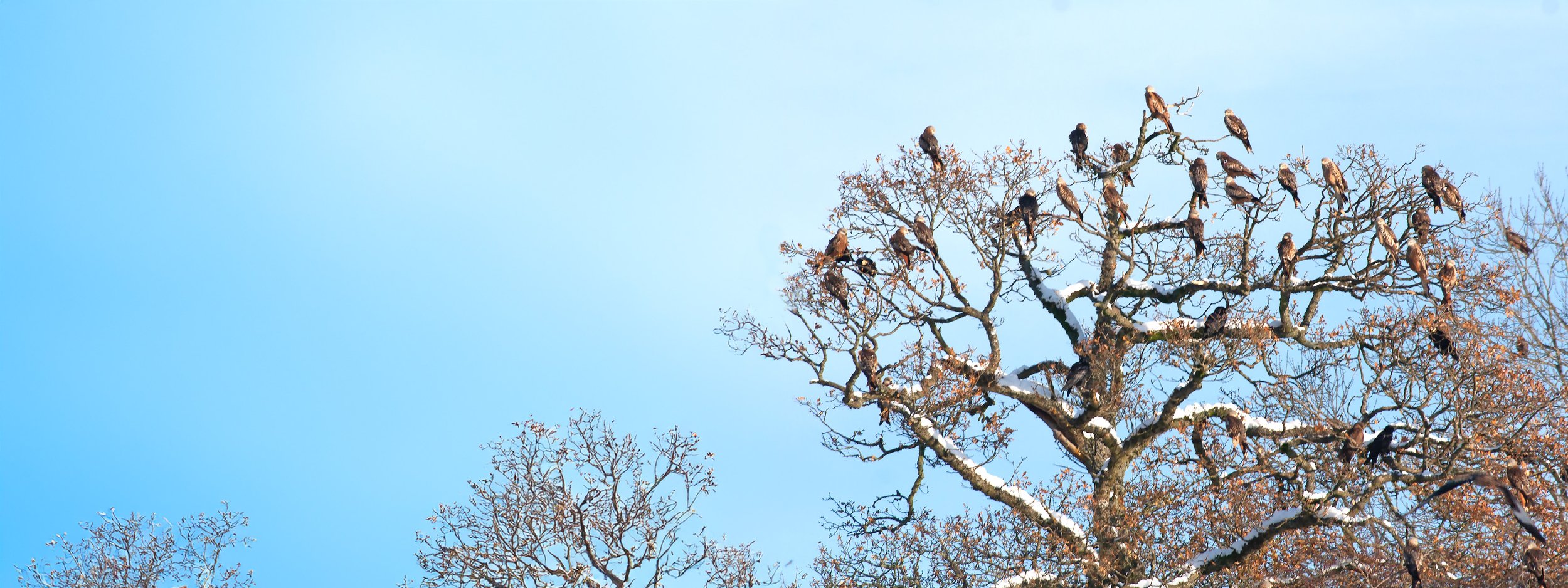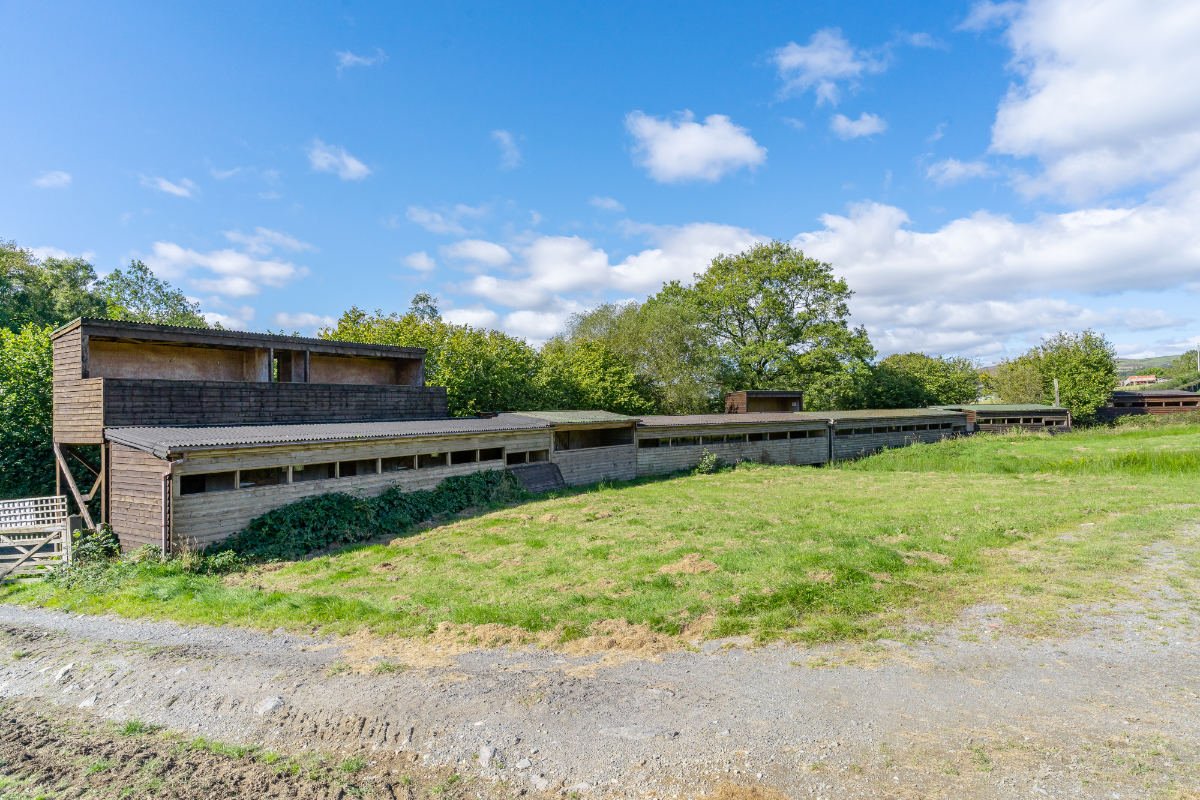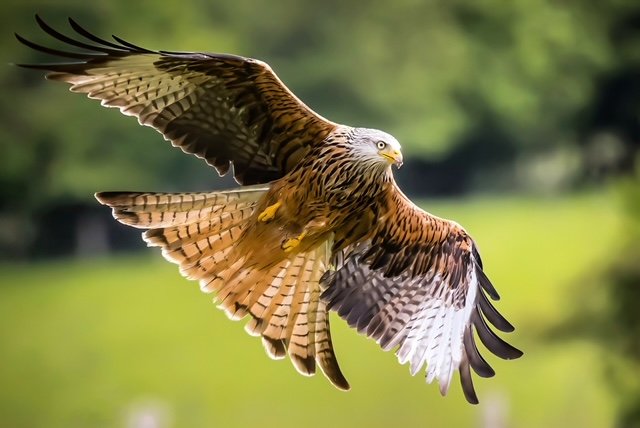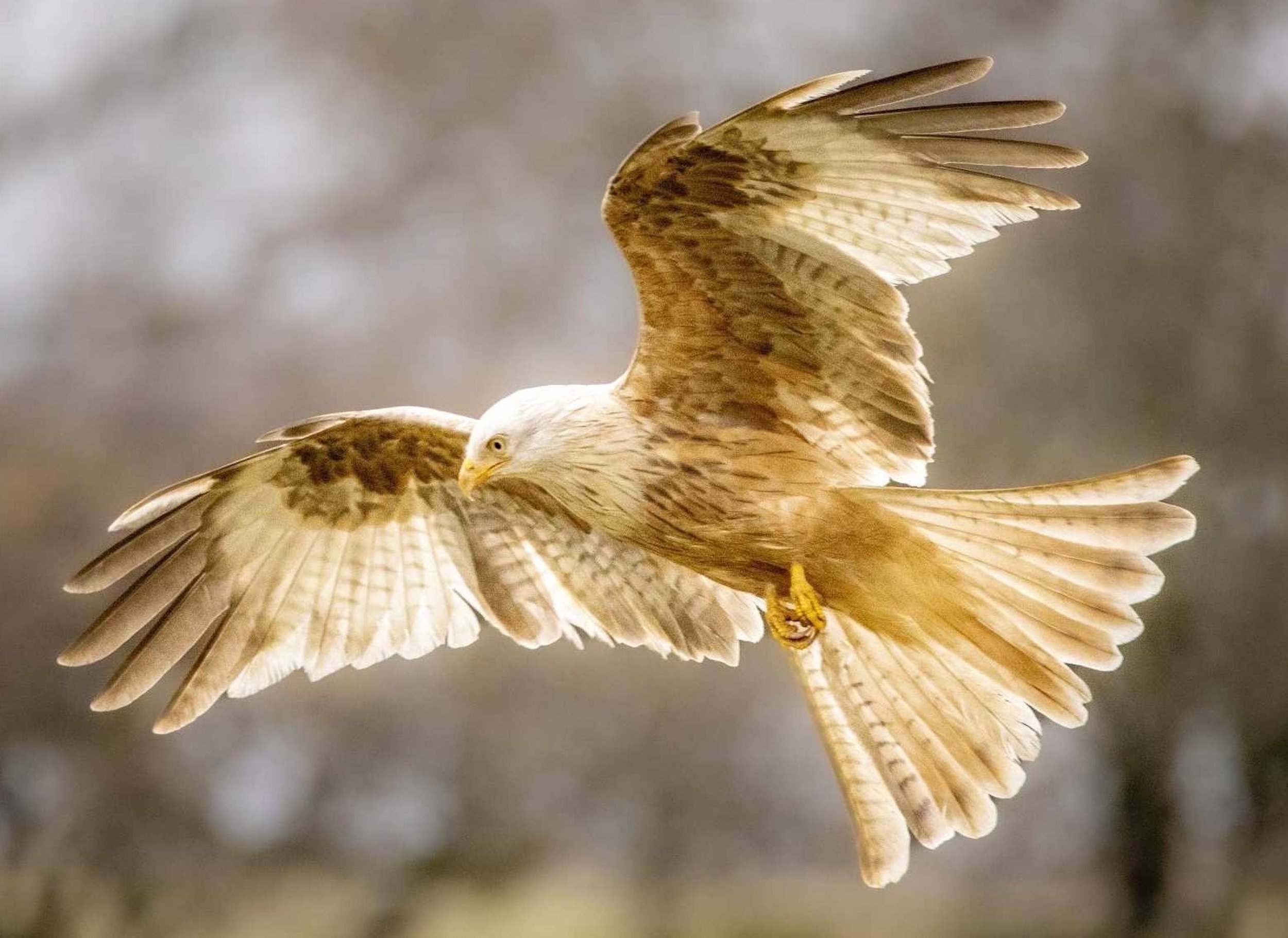
Red Kite Feeding
Hundreds of wild Red Kites are fed at Gigrin Farm every day of the year. Feeding takes place at 2pm GMT (this changes to 3pm when the clocks change at the end of March, and reverts to 2pm at the end of October when the clocks revert to GMT).
We have five large hides. Three are suitable for disabled access. Facing east and, being just metres from where the kites sweep down, the hides give excellent opportunities for photography.
With breathtaking feats of aerial piracy red kites compete with buzzards and ravens for choice pickings.
The crows are usually the first to turn up in the trees around the feeding area; it is quite a noisy affair with the calls of jackdaws and carrion crows plus the deep ‘cronking’ of ravens. Buzzards and Red Kites circle overhead; Buzzards are far more vocal than Kites, their powerful ‘mewing’ carrying a long way.
As soon as the meat has been put out the crow family start emerging from the surrounding trees. As the first crows land amongst the meat the Kites go on the offensive. Kites watch and wait their chance to furl their wings and dive in, skimming the ground to snatch a scrap before rising suddenly to escape the beaks of the angry crows.
Many Kites appear to miss their target by a wide margin but are actually intent on flushing meat laden crows into the air from where they can be mugged by the very best in the business! With meat clutched in its talons the Kite will make for clear airspace where it can feel secure enough to feed. With its 1.8 metre wings spread out for stability the head turns down to meet with its forward lifted legs. Now the Kite can feed, but must still keep an eye out for other marauding Kites.
There appears to be a “pecking order” for the Kites; the older Kites are frequently the first to come in, while younger Red Kites will arrive in growing numbers as the afternoon unfolds, and await their turn to feed. However, this is not the case in the winter months when its every kite for themeselves!
The number of Kites visiting the feeding station can vary from 300 to 600 or more, depending on the weather and the time of year. With the onset of bad weather the numbers can increase dramatically. On blue sky days in spring or summer the Kites may well take their time in coming down for their lunch!
Red Kites, being hungry when they awake, will search for food during the morning and early afternoon. The food we put out for them is only a top up, to help them, and will not prevent them from their natural hunting.
The Kites you see visiting are unlikely to have been here the day before as there is a rolling population of Red Kites during the week.
While seeing large numbers of Kites is an amazing sight, some of the better photographic opportunities present themselves when fewer Kites visit; they are far more leisurely in their approach to feeding and frequently float around the area in front of the hides for some time before taking their morsel of choice.





